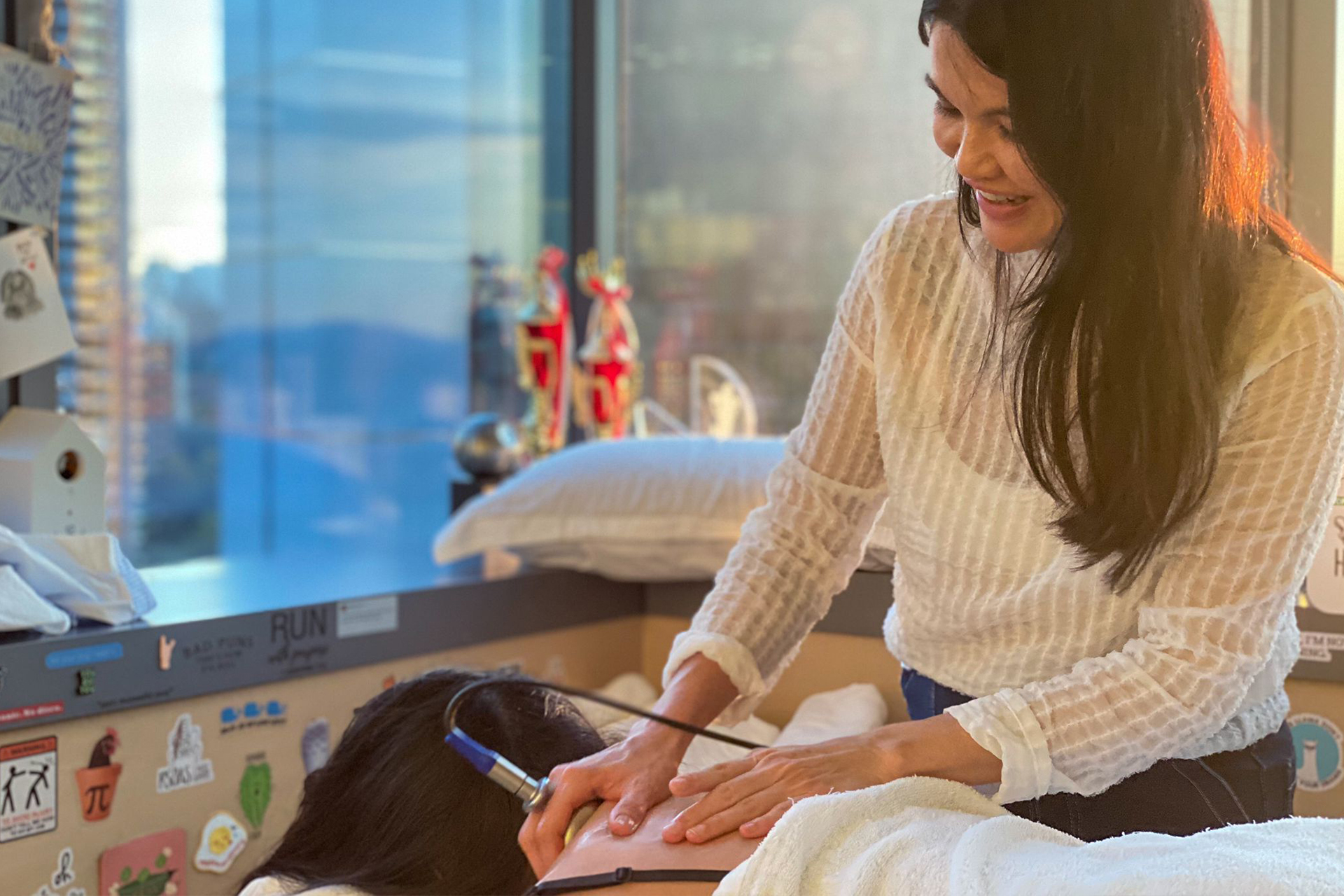Musculoskeletal Disorders
Physiotherapy Treatment for Neck Pain
Neck pain is incredibly common, with almost one in three people suffering from a case of it at least once a year. In general, anyone is at risk of experiencing neck pain regardless of profession or level of physical activity.
It affects people working desk jobs, as improper ergonomics can affect posture and create undue tension in the neck. People working in physically demanding professions or who have experienced acute sports trauma from high-contact sports such as football or rugby or the weekly weekend tennis warrior can also experience neck pain.

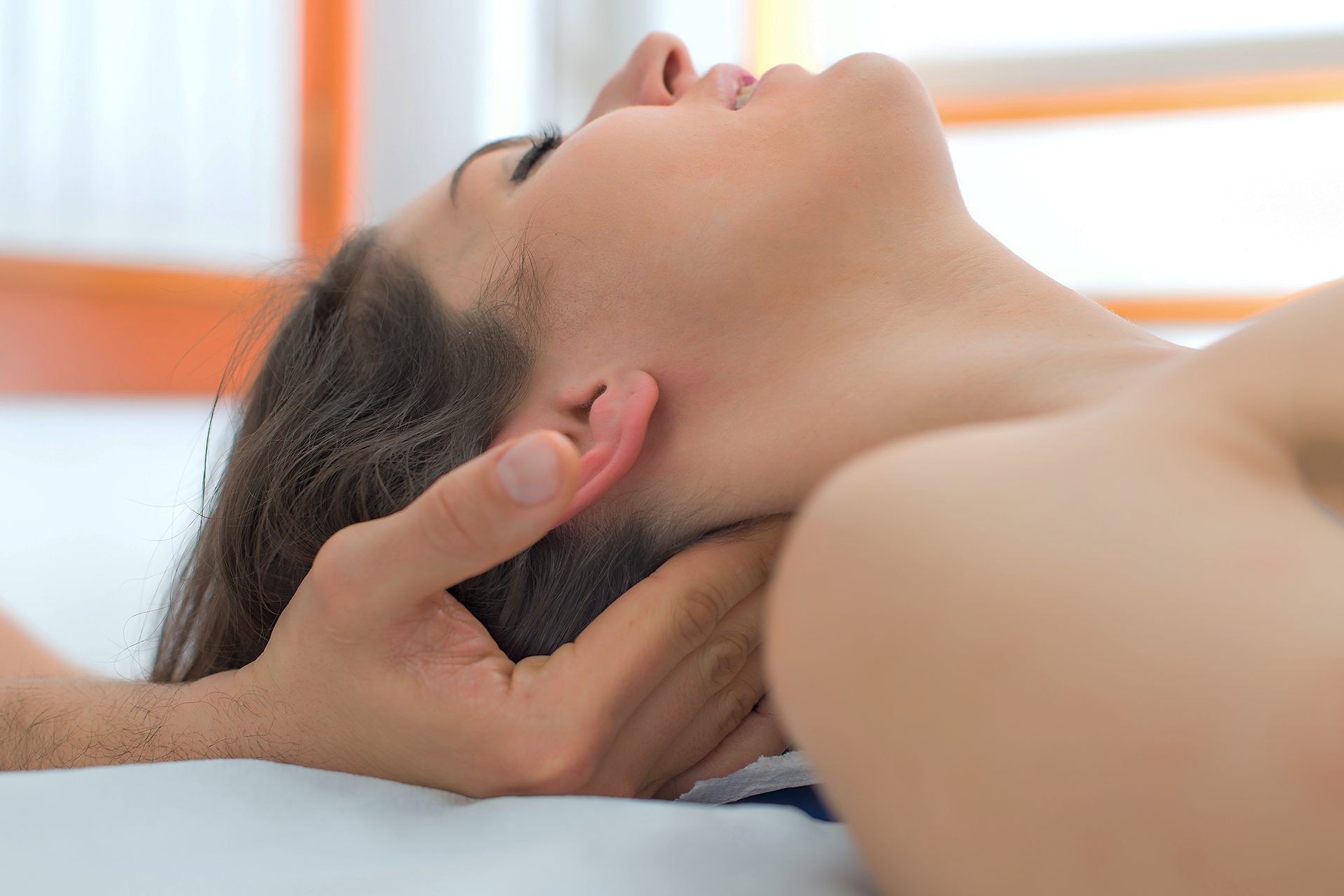
Anatomy of Neck Pain: Possible Causes
The neck is essentially the top end of your spine, connecting it to your head. It’s an incredibly complex network, as it connects to many other parts of the body, like the shoulders, chest, and head, all while housing vital elements of the nervous system and the spinal cord.
Each of these parts of the neck can become imbalanced or injured, so neck pain can take many forms and manifest in different parts of the neck.
Inside your neck are several bones, known as vertebra. Each of these connects to one another and ensures smooth blood flow to the brain while protecting the spinal cord from external damage. Between each vertebra is a disc designed to help the vertebrae interact smoothly with one another. If damaged, the vertebrae or individual discs can catch onto each other, compressing the nerves, creating pain.
In addition, within the neck are several nerve roots exiting the spinal cord and connecting to the rest of the body. If the neck is injured, these nerves can be compressed, creating back of neck pain that can also present itself in other parts of the body like shoulders and arms.
Your neck has three types of muscles: the front (anterior), the back (posterior), and the side (lateral) muscles. Any of these three muscles can become strained by overuse or from an acute traumatic accident. Like any other muscle in the body, these muscles can be pulled or, in worse cases, torn.
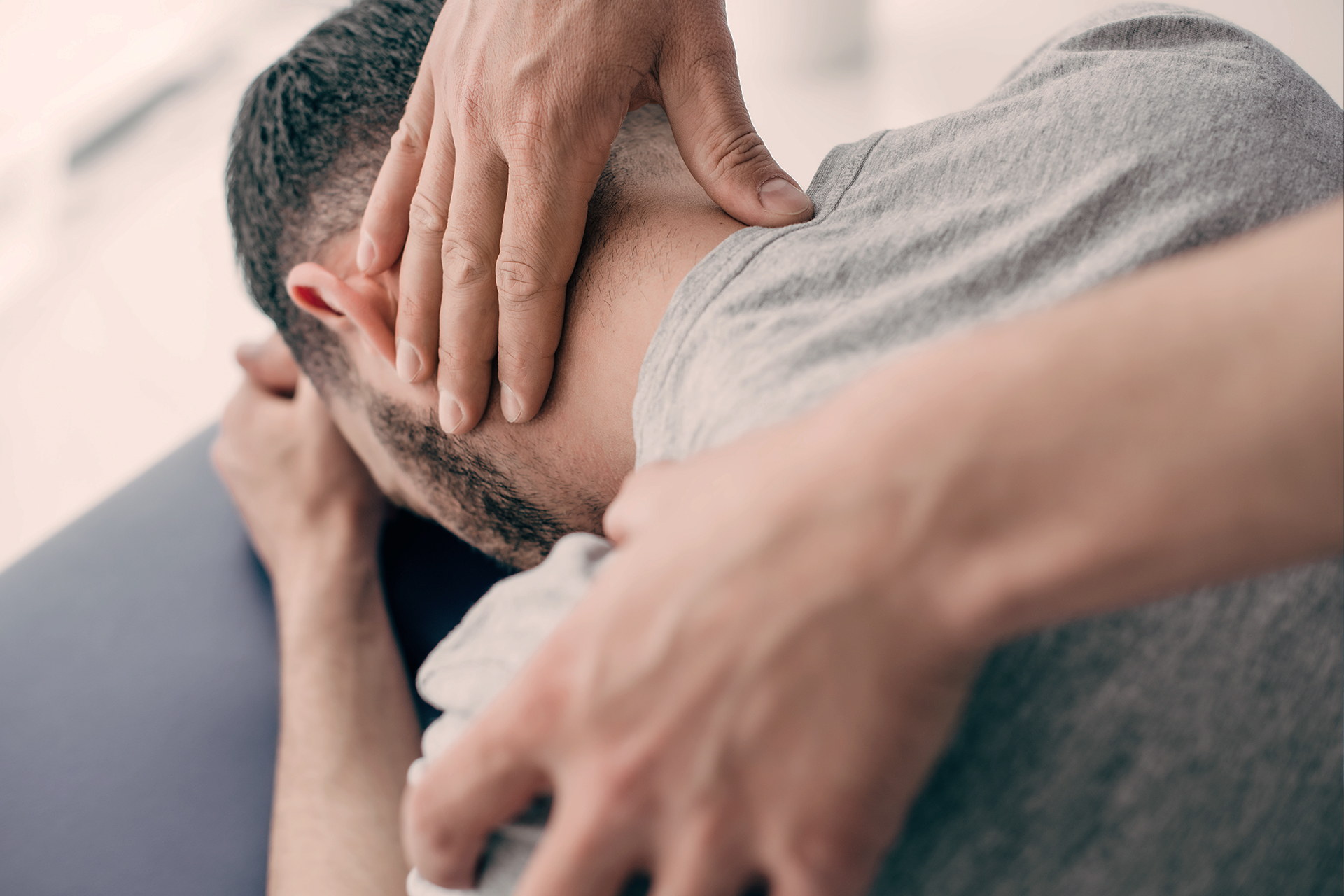
Common Types of Neck Pain and Spine Conditions
Since the neck connects so many different types of body parts, like muscle, nerve, and bone, it is highly susceptible to different types of injury. Its complexity is part of the reason it is such a frequent site of injury in people across different lifestyles:
- Acute trauma from a simple fall or overextension from trying to hit a tennis ball can damage any of the bones, muscles, or nerves in the neck. One of the most common types of acute trauma is whiplash, where the head is thrust forward by inertia, over-stretching the neck muscles.
- Cervical Spondylosis or Lumbar Spondylosis is a chronic condition where the bones and discs in the neck start to degenerate. It’s a type of arthritis that is more common in aging populations.
- Chronic conditions describe any instance of neck pain that lasts over a long period of time, from degenerative musculoskeletal disorders to neurological conditions.
- Facet Joint Syndrome is another musculoskeletal condition similar to arthritis, where the cartilage on the bones in the spine starts to degenerate, creating unwanted friction and pain. It can occur lower in the back or higher near the neck.
- Headaches is a blanket term to describe pain in the head, which could be neurological in nature, or in some cases, stem from an injury that is creating pain in the head.
- Herniated disc is a condition where the rubber-like cushions between the vertebrae bulge, slip, or rupture, creating pain in the neck.
- Hip disorders can create an imbalance in the body that causes neck pain due to the misalignment.
- Pinched Nerve or Cervical Radiculopathy nerve roots in your neck can become inflamed or compressed by neurological dysfunction. Other neck conditions like a herniated disc or cervical spondylosis could also damage these nerve roots. This fairly common condition creates pain in the shoulders, neck, and arms.
- Muscle pain in your neck can become strained or overstressed by poor posture or an acute injury, leading to pain in the neck.
- Muscle spasms are the involuntary tightening of the muscles as in a cramp or twitch. You may find yourself getting these frequently if there is undue muscle tension in your head, making turning your neck difficult.
- Repetitive strains are caused by consistent overuse of the muscles, tendons, and nerves in your neck.
- Rheumatoid arthritis causes pain, stiffness, and inflammation when the body’s immune system mistakenly attacks the joints.
- Spinal cord tumors can create neck pain as the tumor presses against nerve roots.
- Spinal injuries can be debilitating acute injuries to the spine, affecting the stability of the spine and the multiple nerve roots in the spinal cord.
- Spinal stenosis refers to a condition where the space between backbones in the spine is too small, compressing the nerves that run through the spine, creating pain.
- Tumors, not necessarily just on the spinal cord but also elsewhere in the body, can also create pain in the neck.
If you’re experiencing any of these types of neck pain and related conditions, contact our clinical team to discuss the right physiotherapy for neck and shoulder pain therapies for your specific condition.
There are several signs that indicate your neck pain is a symptom of a serious condition. These include symptoms like numbness across the body, debilitating pain in the neck, and tingling or weakness in the neck. In extremely severe cases, it’s possible your stiff neck can be connected to a nervous disorder, causing severe headaches, nausea, or coordination issues. In these cases, it is imperative to seek medical attention immediately.
Acute versus Chronic Neck Pain
Neck pain can either be acute or chronic. Acute pain normally stems from a specific injury, like a bad fall, whiplash, or being tackled in a game like rugby. Chronic pain is usually harder to locate the precise problem and can be more of a low-level pain sustained over a long time.
Most healthcare providers distinguish between acute and chronic pain by the duration of the condition: acute pain is usually under 4 weeks, while a chronic condition lasts more than three months. You can experience both these types of pain concurrently, which requires a holistic neck pain treatment plan.
Arthritis and other associated musculoskeletal pain from conditions like rheumatoid arthritis, cervical spondylosis, and spinal stenosis are considered chronic conditions, as they last for a very long time and force patients to live with ongoing pain. Though a herniated disc can occur because of an acute injury, it can develop into a source of chronic pain.
Our multidisciplinary clinic in Singapore is a leader when it comes to chronic neck pain physiotherapy treatments. Discover our diverse treatment options available at HelloPhysio to relieve chronic pain.
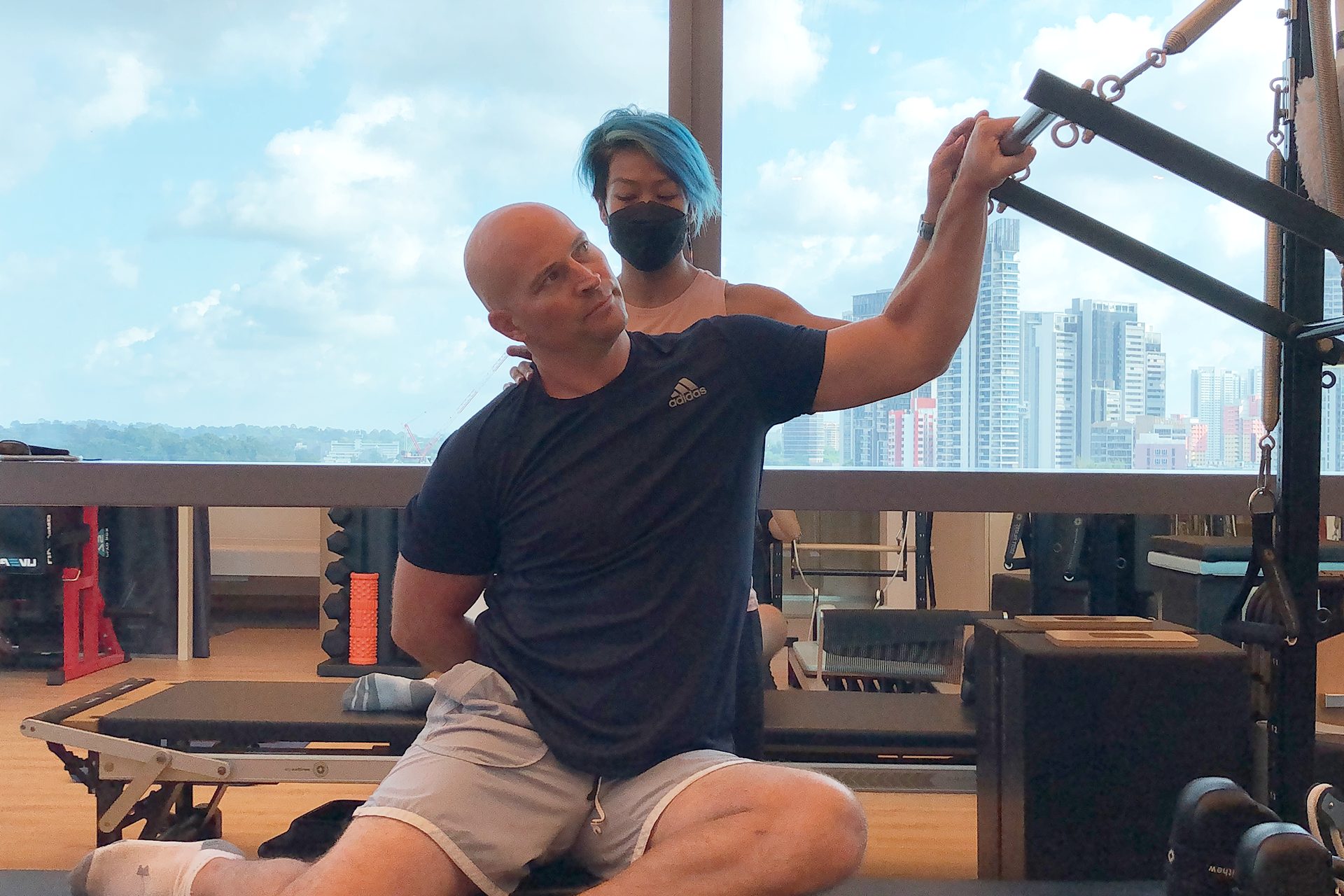
Physiotherapy Treatments for Neck Pain Relief
Neck pain can be challenging to live with; however, leading physiotherapy treatments provided at HelloPhysio can alleviate symptoms and promote accelerated healing without surgery:
- INDIBA Activ is a clinically-proven treatment protocol that enables faster healing, reduces inflammation by improving blood circulation, and alleviates chronic neck pain conditions through noninvasive radiofrequency waves to promote cell growth.
- MAGNETOLITH EMTT is a conservative treatment option that uses magnetic energy to stimulate the cells within the body to heal to treat chronic pain and degenerative joint diseases like arthritis.
- LightStim Red Light Therapy is an FDA-approved and adjunctive technology used by leading physiotherapy clinics for neck pain that increases blood circulation for faster recovery, whether from an acute neck trauma or chronic condition.
- Clinical Pilates works to strengthen muscles to address biomechanical imbalances throughout the body that are attributed to spinal issues like spinal stenosis or hip disorders that cause pain.
- Sports Massages can release tension from a myofascial perspective to lengthen tight cervical muscles in the neck, shoulders, back, and chest to reduce muscle stiffness and improve mobility.
- Dry Needling releases taut bands of muscles by targeting myofascial trigger points to treat pinched nerves, headaches, disc disorders, and arthritic neck pain.
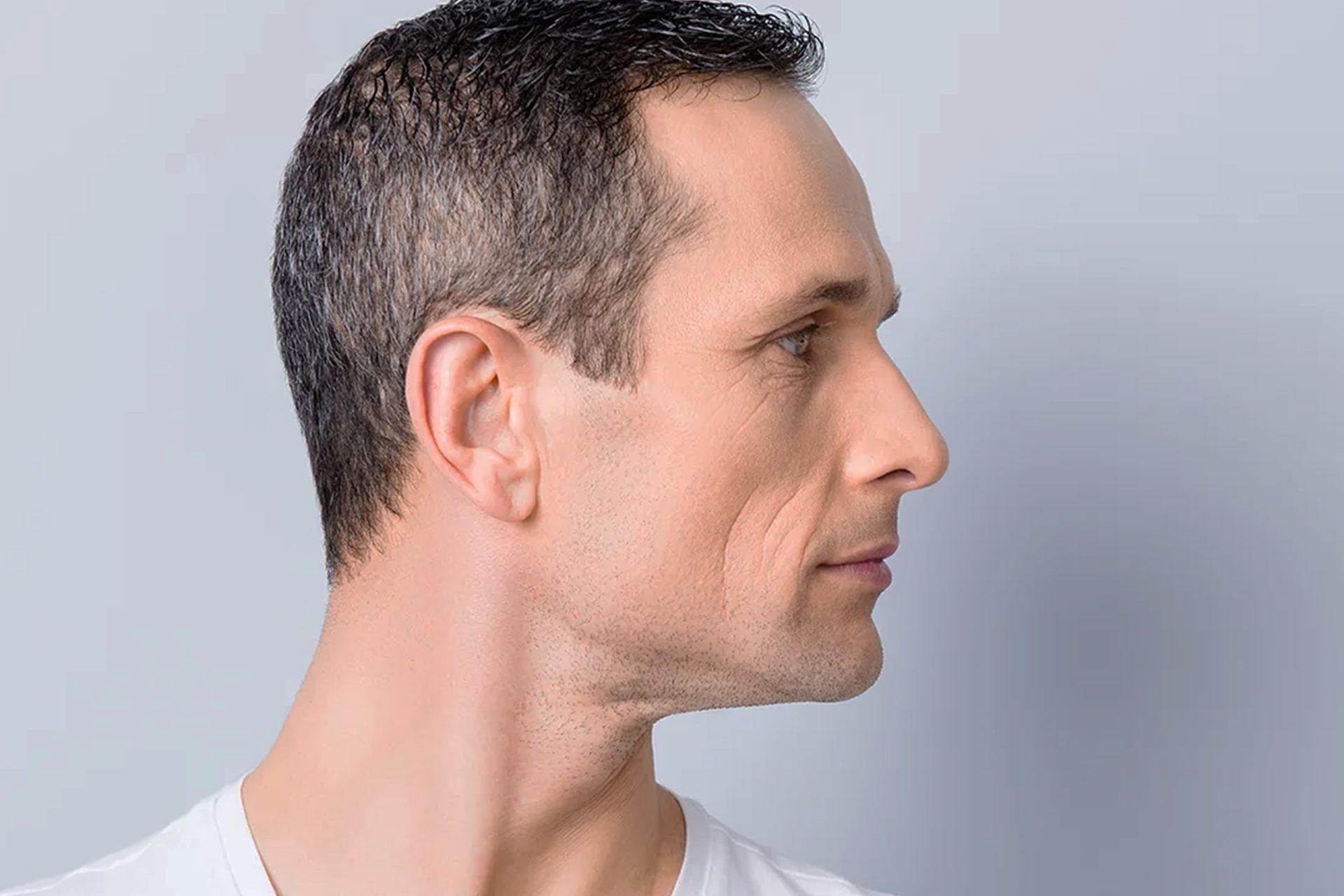
Physical Therapy Rehabilitation after Neck Surgery
Physical therapy helps patients recover and heal faster and is essential to regain full mobility following surgery without pain to prevent future injuries.
In cases when conservative neck pain treatments fail to relieve pain and surgery is necessary, physical therapy and other adjunctive modalities are vital to restoring mobility and function. Physical therapy before the elective surgical intervention — often referred to as prehabilitation — works to improve postoperative outcomes by improving the body’s natural ability to withstand invasive surgery.
Post-surgery treatments like INDIBA Activ and LightStim Red Light Therapy can stimulate cell growth, helping the neck heal itself. These highly advanced technologies can help your neck get back in working order faster when coupled with manual physiotherapy for neck and back pain.
Consultations for Neck Pain Physiotherapy in Singapore
If you are suffering from neck pain, it’s important you understand the root cause of your neck pain to determine the most effective treatment plan to alleviate the discomfort. In some cases, it may be as simple as some stretching exercises to strengthen your neck muscles and reduce tension. In other cases, a more robust, ongoing treatment may be necessary to keep your neck pain at bay and ensure your spine stays safe and healthy.
HelloPhysio’s multidisciplinary team of rehab experts works to identify all the factors related to your neck and back pain.
Whether you’re looking for physiotherapy for chronic neck pain, have recently experienced an acute neck injury, or are preparing for surgery, our team at HelloPhysio can help speed up your recovery process to relieve pain and restore movement as quickly and safely as possible.
No matter your situation, our evidence-based treatment plans and industry-leading technologies work in complement to achieve optimal results.

